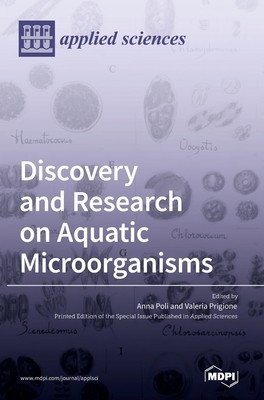
- We will send in 10–14 business days.
- Publisher: MDPI AG
- ISBN-10: 303653797X
- ISBN-13: 9783036537979
- Format: 17 x 24.4 x 1 cm, hardcover
- Language: English
- SAVE -10% with code: EXTRA
Discovery and Research on Aquatic Microorganisms (e-book) (used book) | bookbook.eu
Reviews
Description
Aquatic environments, including freshwater and marine ecosystems, raw and treated sewage, sludge, and sediments, are home to a huge variety of microorganisms that mediate the recycling of dissolved organic carbon and recalcitrant substrata into food webs and the atmosphere. Archaea, bacteria, filamentous fungi, and yeasts play a key role in degradation processes, and many of them are used or have the potential to be harnessed in bioremediation. The importance of aquatic microorganisms is in their physiology and behavior: they can sink or float, some are motile, others adhere to a range of biotic and abiotic substrates (e.g. algae, invertebrates, sediments, driftwood), and they can form biofilms on surfaces, remain planktonic, or produce a broad diversity of bioactive compounds.
By gathering a collection of papers focused on microorganisms in the over-cited environments, this Special Issue will improve the current knowledge of aquatic microbial biodiversity.
EXTRA 10 % discount with code: EXTRA
The promotion ends in 10d.04:38:56
The discount code is valid when purchasing from 10 €. Discounts do not stack.
- Publisher: MDPI AG
- ISBN-10: 303653797X
- ISBN-13: 9783036537979
- Format: 17 x 24.4 x 1 cm, hardcover
- Language: English English
Aquatic environments, including freshwater and marine ecosystems, raw and treated sewage, sludge, and sediments, are home to a huge variety of microorganisms that mediate the recycling of dissolved organic carbon and recalcitrant substrata into food webs and the atmosphere. Archaea, bacteria, filamentous fungi, and yeasts play a key role in degradation processes, and many of them are used or have the potential to be harnessed in bioremediation. The importance of aquatic microorganisms is in their physiology and behavior: they can sink or float, some are motile, others adhere to a range of biotic and abiotic substrates (e.g. algae, invertebrates, sediments, driftwood), and they can form biofilms on surfaces, remain planktonic, or produce a broad diversity of bioactive compounds.
By gathering a collection of papers focused on microorganisms in the over-cited environments, this Special Issue will improve the current knowledge of aquatic microbial biodiversity.


Reviews